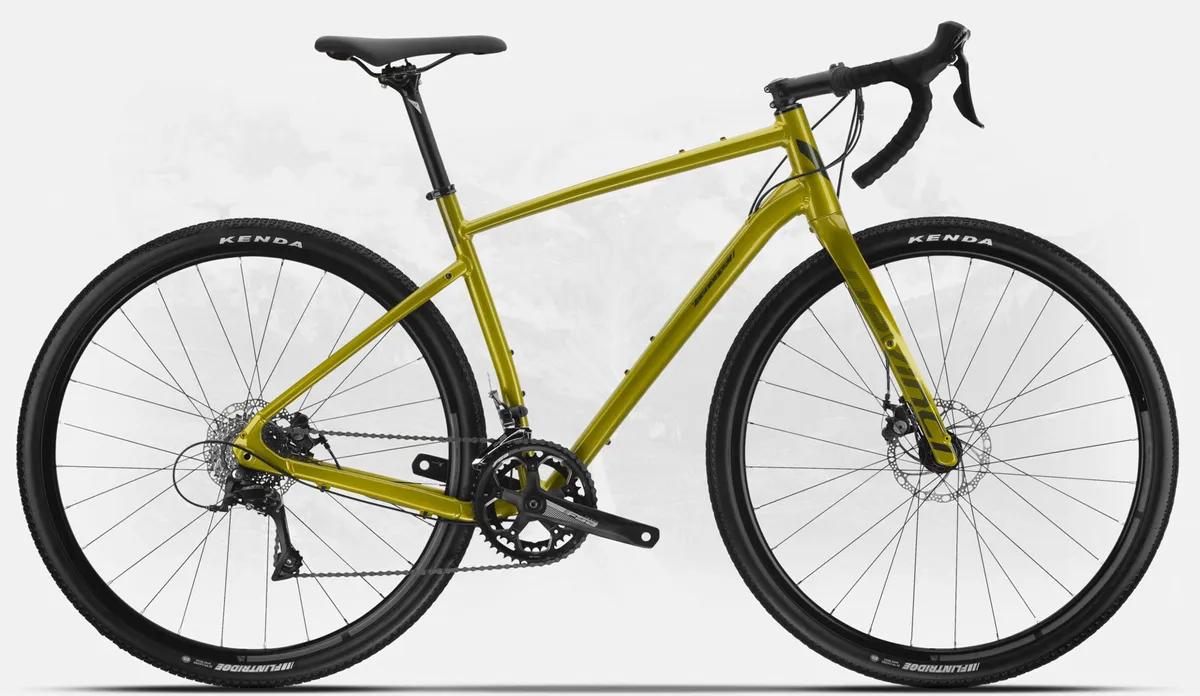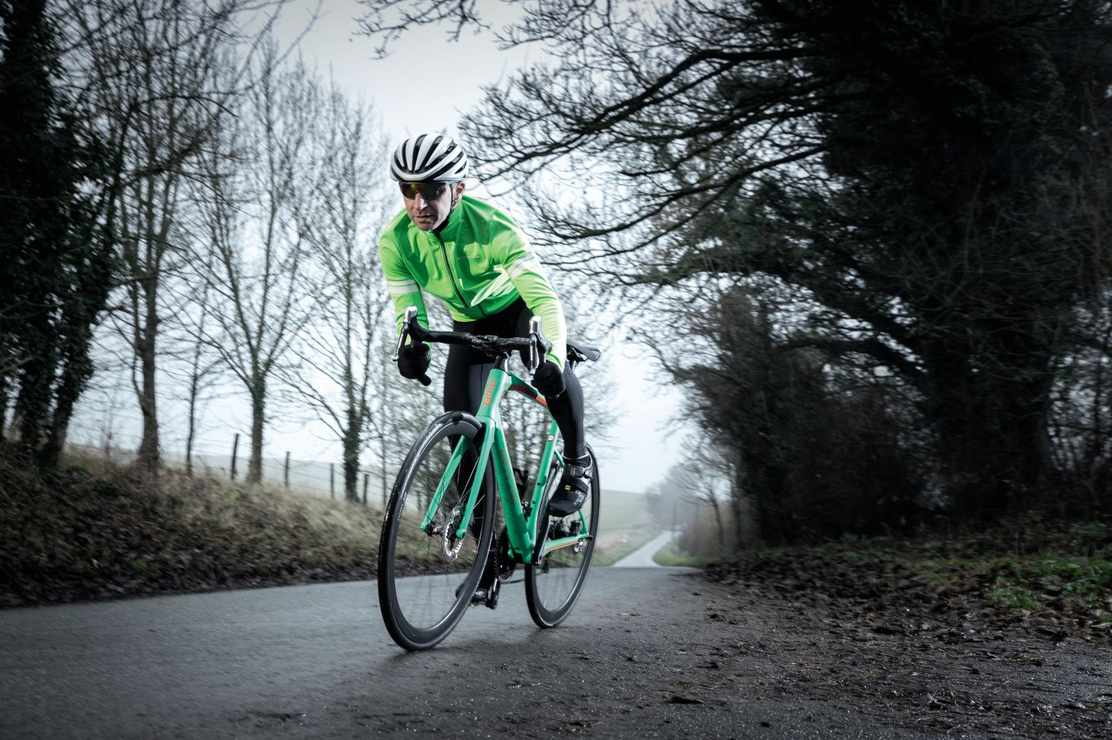Gravel, all-road, call it what you will, it’s a rapidly growing bike sector, and definitely isn’t going away. Testament to this is Canadian brand Devinci’s second generation Hatchet.
Although the company majors in mountain bikes, its home province of Quebec boasts an embarrassing richness of gravel roads and trails, plus more singletrack than you can point a mountain bike at — something that 2016’s original Hatchet has already exploited.
In line with current thinking, and undoubtedly drawing on its MTB roots, Devinci has given the new Hatchet the ability to tackle the sort of technical terrain that more road-focussed machines would struggle with.
The 12-bike range includes carbon fibre and aluminium frames, all with one of two carbon forks, and single or double chain ring builds.
WF (women’s fit) models share the standard model’s geometry, as research has shown that it suits most women, but they do include specific contact point alterations, with a narrower bar and women’s saddle.

Thanks to Devinci’s twin dropped chainstay design, tyre sizes in each model’s standard build range from 32mm to 40mm, with a maximum recommended inflated width of 45mm for a 700c wheel, although there is some leeway as a 700c x 50mm Maxxis Rambler tyre fits well too.
With 650b wheels fitted, maximum tyre size is stated as 2.1in. As ever, the combination of tyre and rim will determine the tyre’s ultimate width when inflated, which often differs from their nominal size.

There are four carbon models, two come with single-ring chainsets and two with doubles, and all have Devinci’s Super Leggera carbon fork.
Eight Optimum Aluminium R03-framed models come with Devinci’s full carbon fork, and only the top model is 1x, featuring a mixture of SRAM Rival and Apex.

The other aluminium models all have two 50/34 chainrings, except the Sora build, which has a 48/32 as standard.
Devinci says that the minimum and maximum chainring sizes for 1x and 2x drivetrains on the Hatchet are 40t-48t for 1x, and from 46/34 to 52/36 for a double chainring machine. The minimum Q-Factor possible is 145mm.

Devinci Hatchet geometry
The Hatchet’s head and seat angles are 70/74 degrees for XS models, 70.5/74 for S, 71/73.5 for M, 71/73 for L, and 71.5/73 degrees on XL frames, while the fork offset is 50mm and chainstay length is 430mm.
The carbon frame’s top tube is longer than the old model, although the aluminium bikes have top tubes 2 or 3mm shorter than their carbon cousins, and stem lengths are a little shorter.
Aluminium frames have a longer head tube, giving a slightly taller position for the bike’s intended adventure or commuting use.

Wheelbase measurements are generous for stability (1,046mm size M), and 1 or 2mm shorter for aluminium models too.
The Hatchet was designed for a zero-offset seatpost, so a dropper post wouldn’t alter the saddle’s fore/aft position.
Devinci claims that each carbon frame size offers consistent stiffness thanks to a special resin process, and the way high modulus carbon fibre is used in specific areas on the frames. The front end in particular has been stiffened to maintain a responsive feel and counteract the torsional effect of much larger tyres.

Devinci Hatchet frame
Devinci claims that a medium carbon frame with all hardware and its generous paint coating weighs 1,135g, and the Super Leggera fork cut to suit is 460g. The Hatchet has no rider weight limit. We weighed a medium size Hatchet GRX LTD with standard 40mm tyres at 9.32kg.
The Hatchet is designed for 160mm disc rotors at both ends, and unlike the fork, the rear thru-axle isn’t capped at the threaded end, allowing for use on an indoor trainer. The 32mm tyred models are aimed more at road/all-road applications, and mostly have quick release wheelsets.
There’s a 10mm spacer available that sits beneath the IS headset and above the fork crown to correct the geometry for riders choosing to run 650b wheels.

Devinci isn’t offering a standard 650b option for sale because it believes that the increased volume of the latest 700c tyres will satisfy most riders.
All brake lines and gear cables are routed internally through the fork leg, or through a port on top of the down tube, which carries three separate controls on the carbon models and four on the aluminium. An alternate intake port is available for Di2 routing.
On aluminium frames, the brake, gear and dropper post housings exit before the bottom bracket shell and continue externally, and gear outer casing is complete from end to end for reliability.

While double chainring aluminium models have a band-on front derailleur, the carbon frame has a press-on plastic cover that maintains smooth frame lines when the front derailleur mount is removed. An access panel in front of the bottom bracket shell helps with internal cable routing and maintenance.
Cables run through oversized foam hoses inside the down tube, then continue through foam-lined internal tubes fixed inside each chainstay, avoiding rattles and simplifying setup.

Integrated Polyurethane sections protect the bottom bracket shell plus the top and bottom of the driveside chainstay from chain slap.
The frames we’ve seen are pre-production, but production models will also have a length of clear 3M tape below the lower half of the down tube for frame protection.
There are three bottle cage mounting points, two within the main triangle and one below the down tube. There’s a top tube fuel/accessory bag mount too, and the bolts on final production bikes will have flush, co-moulded threaded inserts rather than the slightly proud riveted versions seen here.

The top-spec Hatchet Carbon GRX LTD comes with a bar-operated dropper seatpost as standard, giving 65mm more saddle clearance, and every frame has routing in place for a similar 27.2mm dropper.
All models have discreet mudguard/fender and rear rack mounts, and the aluminium ones also have fork mounts for a low rider rack. Impressively, the Hatchet can run 45mm tyres with full mudguards/fenders.
To maintain 45mm tyre clearance, the aluminium frame includes a slim forged aluminium chainstay section behind the chainset, and the seat tube has a pronounced kink.
Devinci offers a lifetime frame warranty.
Devinci Hatchet availability and pricing
The new Hatchet is available in stores now, with most pricing confirmed.
- Hatchet Carbon GRX LTD: $3,299, CAD$3,999, €3,499
- Hatchet Carbon Rival 1: $2,499, CAD$2,999, €2,599
- Hatchet Apex 1: $1,899, CAD$2,299, €1,999
- Hatchet Sora: $1,299, CAD$1,599
- Hatchet Carbon 105 11S: $2,899, CAD$3,499, €3,099
- Hatchet Carbon 105 11S WF: $2,899, CAD$3,499, €3,099
- Hatchet 105 11S: $1,999, CAD$2,399
- Hatchet Tiagra 10S: $1,399, CAD$1,699
- Hatchet Tiagra 10S WF: $1,399, CAD$1,699
- Hatchet Sora 9S: $1,199, CAD$1,499
- Hatchet Claris 8S: $1,099, CAD$1,299
- Hatchet Claris 8S WF: $1,099, CAD$1,299



















